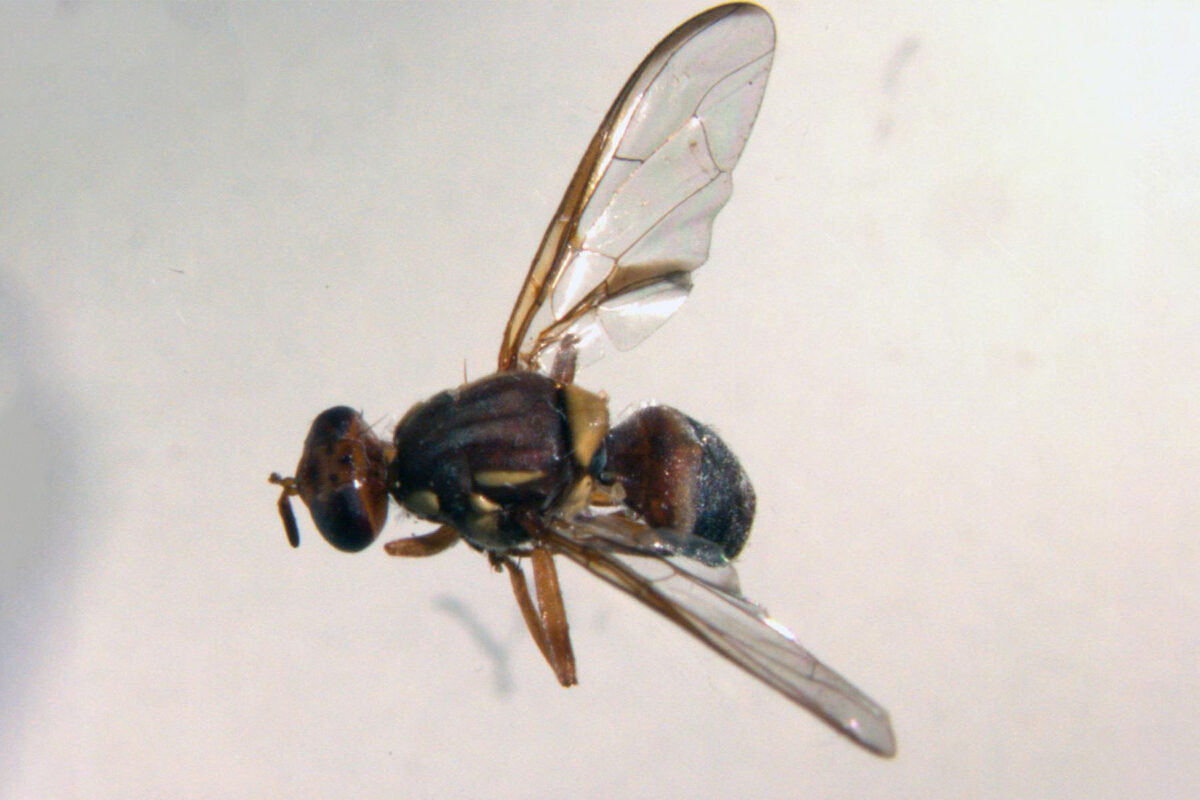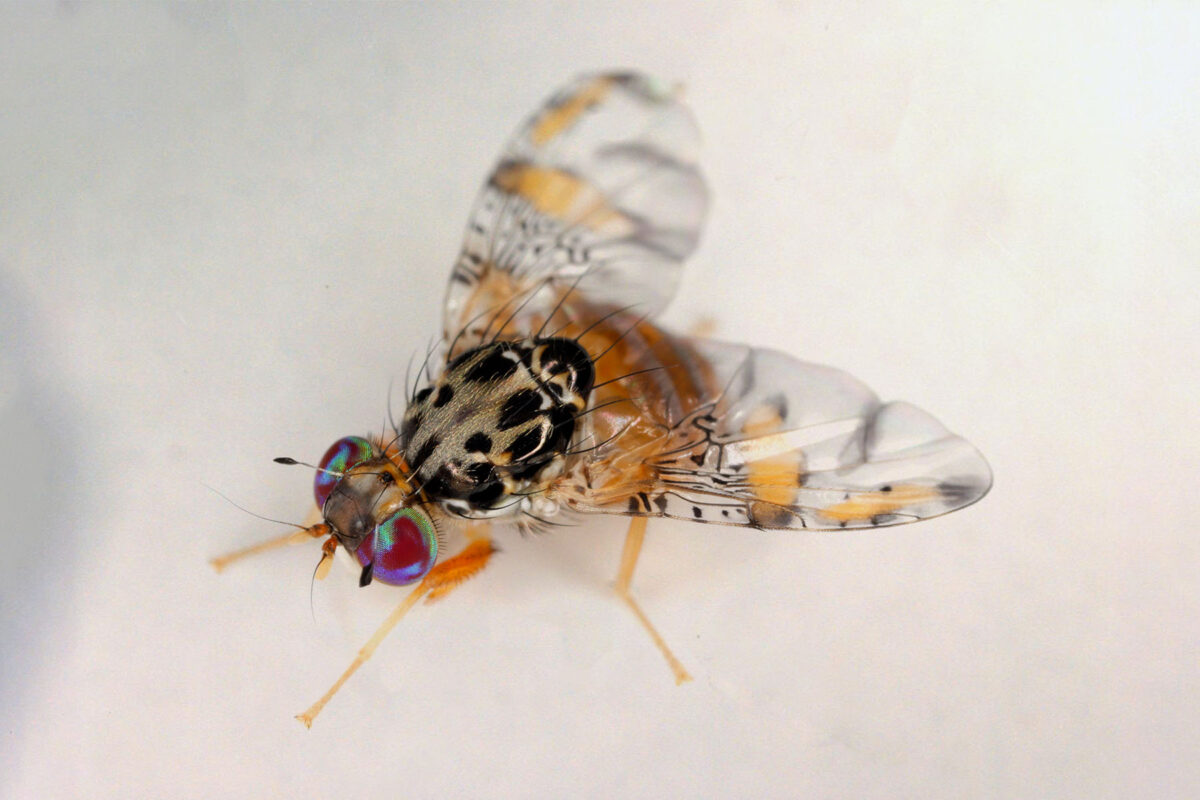Pest species
Pest fruit flies are harmful because they lay eggs in ripening fruit and vegetables, causing healthy produce to rot and spoil from the inside.
There are two species of fruit fly belonging to the family Tephritidae that are considered major pests currently present in Australia. The first is the Queensland fruit fly, (Bactrocera tryoni)an Australian native species occurring in the Northern Territory, Queensland, New South Wales and Victoria. The second is the Mediterranean fruit fly (Ceratitis capitata) whose migration is limited to parts of Western Australia and is considered an introduced species.
The Queensland fruit fly (Qfly)
Scientific name: Bactrocera tryoni (Froggatt)
An adult Qfly is about 7mm long and reddish-brown in colour, with distinct yellow markings.
Larvae are about 9mm long and creamy white in colour.
This species is native to north-eastern Australia. While it is most active from September to May, it can also be active in warmer periods during the winter.
The Qfly lays eggs in a wide range of plants which include many cultivated and wild species. Its larvae (or maggots) are about 5–10mm long and creamy-white in colour.
While it lives predominately in parts of Queensland, New South Wales, Victoria and the Northern Territory, it can be found outside these areas—for example there have been occasional detections in Canberra during warmer months. However, it’s unlikely that the pest will survive over the winter months.
Mediterranean fruit fly (Medfly)
Scientific name: Ceratitis capitata (Wiedemann)
With a light brown body and mottled wings, an adult Medfly is smaller than a Qfly, measuring 3–5mm long.
Medfly larvae are slightly larger than Qfly, at about 7–8 mm long, but they are also creamy white in colour.
In Australia, Medfly is restricted to Western Australia but can be found in numerous locations around the globe. Medfly are primarily active from October through May, infesting a wide variety of fruits and vegetables along the way.

